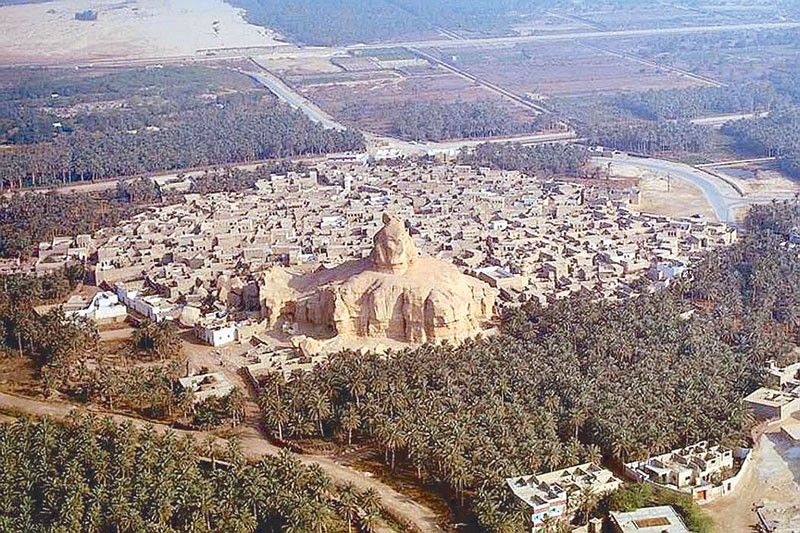It’s time to visit Saudi Arabia

MANILA, Philippines — Saudi Arabia is rolling out the welcome mat to international visitors as the kingdom began issuing tourist visas last month.
The new visa scheme, covering 49 countries (the list is being updated), was announced by the Saudi Commission for Tourism and National Heritage (SCTH) at a glittering event at Ad Diriyah, a UNESCO World Heritage Site located northwest of the capital Riyadh.
The tourist visa is different from a visa for the Hajj, which annually brings over two million pilgrims to Mecca. Tourist e-visas may now be applied online (www.saudiarabiavisa.com and click on the apply for visa tab). Applicants must have a passport valid for at least six months from intended date of entry to Saudi Arabia. Validity of the visa is one year, multiple entry, with allowable stay in Saudi of 90 days per visit. Cost of visa is 440 Saudi riyals (about $117).
Filipino citizens are currently not yet able to avail of the e-visa, but they may apply at the Saudi embassy in Salcedo Village, Makati. Aside from a valid passport, applicants are required to present round trip air ticket, valid insurance, certificate of employment and/or proof of financial capability (bank statement for three months), among others. Validity of this visa is 90 days, with an allowable stay of 30 days. For complete information, visit the website visitsaudi.com/en/
This is welcome news for families of the hundreds of thousands of Filipinos working in the kingdom. It is as well a chance for travelers to go to what used to be one of the most difficult countries to visit, with visas previously limited to business or pilgrimage. Currently, visitors number around 40 million a year; the SCTH looks to increase this to 60 million by 2022 and to 100 million by 2030.
The push for tourism is part of Saudi Arabia’s Vision 2030, which aims to reduce the kingdom’s dependence on oil and to diversify the economy. It also aims to increase tourism’s contribution to GDP from the current three percent to 10 percent. The SCTH has been training around 300,000 citizens on dealing with tourists in preparation for the expected influx of international visitors.
Saudi Ambassador to the Philippines Dr. Abdullah Al Bussairy is enthusiastic about welcoming Filipinos to his country. You don’t have to be visiting family to go to Saudi Arabia. “All Filipinos are welcome,” he told The STAR, adding with a smile, “We know Filipinos very well.”
Allaying security concerns following the recent drone attack on a Saudi oil facility, the ambassador assured us “it is very safe,” with police presence and high-tech security measures in place.
A more open society also allows women to travel unaccompanied: “Yes, even a woman alone can come, there is no problem,” he said. “There is much to see and do in Saudi Arabia; there is history, there is shopping in the souks and big, modern malls.”
Saudi Arabia is the largest country in the Middle East (with a land area of 2.15 million square kilometers) and has 13 provinces, “each with a distinctive cultural tradition,” according to the SCTH.
The kingdom is rich in culture, history and natural attractions, including five UNESCO World Heritage Sites. Ad Diriyah is home to the Al Turaif district, a heritage site which dates to the 15th century and was the first capital of the Saudi state. It was cited by UNESCO as “an outstanding example of traditional human settlement in a desert environment,” including the remains of many palaces. But it is definitely in the modern era, with the month-long Ad Diriyah Season, which begins on Nov. 21, featuring sports (a Formula E race of electric cars, a heavyweight boxing title fight and a professional tennis tournament), concerts, cultural and food festivals.
Jeddah, a port city on the Red Sea, is the gateway to the pilgrimage sites of Mecca and Medina. It is Saudi’s second largest city. While it is a modern commercial hub, the Al Balad historic district dates to the 7th century with traditional homes built from coral. The Corniche, a seafront promenade, features luxury resort hotels, beaches, outdoor sculptures and the iconic King’s Fountain, which shoots sea water up to a height of 853 meters.
Other UNESCO heritage sites are the Al Ahsa Oasis with its 2.5 million date palm trees, the largest oasis in the world with gardens, canals, springs and wells that show traces of human settlement from the Neolithic Age; Rock Art in Jubbah and Shuwaymis in the Ha’il region in the north depicting human and animal figures covering 10,000 years of history; and Al Hijr, an archeological site that is the largest conserved site of Nabatean civilization south of Petra in Jordan, where over 100 tombs dating from the 1st century BC have been preserved.
In light of more Filipinos visiting Saudi Arabia, the Department of Foreign Affairs (DFA) recently issued a reminder to Filipino travelers to adhere to “public decency” regulations, including rules on immodest clothing (while female tourists are not required to wear a head scarf, the desert heat does not justify their wearing short shorts or tank tops), public displays of affection, taking photos or videos of people without permission, playing music at prayer times, among others.
“The DFA encourages Filipino travelers to familiarize themselves with Saudi public decency laws to avoid violations,” it said in a public advisory.



















